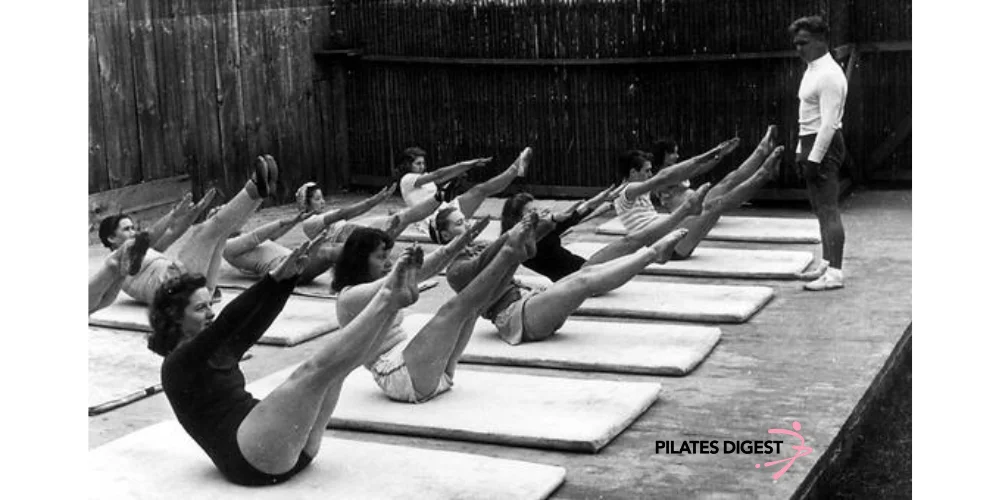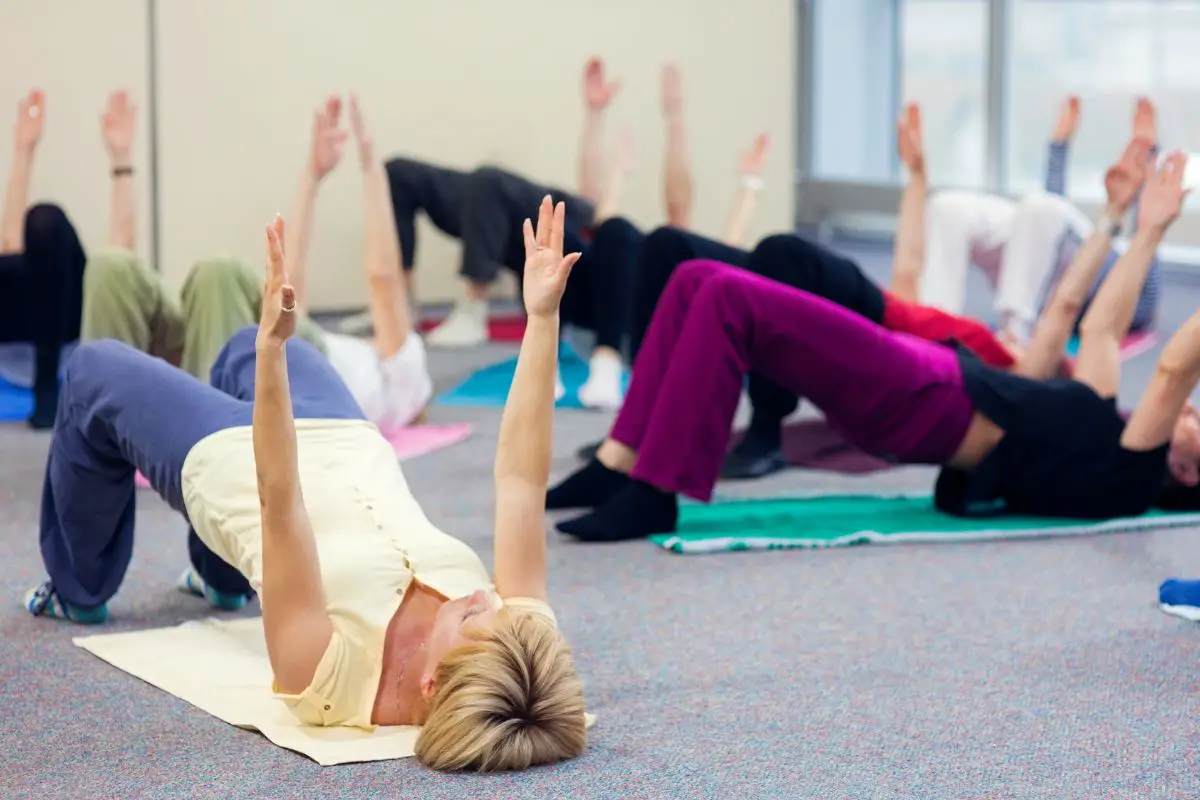Exercise

Even if you’ve never heard of Joseph Pilates, there’s a good chance that you’ll be familiar with the form of exercise known as “Pilates”.
This exercise is popular all over the world and is used as a form of physical therapy to help people rehabilitate and recover from injuries, or even just to improve their overall physical condition.
So, if you want to learn more about Joseph Pilates, the creator of Pilates, then keep reading on, and we’ll provide you with all of the information you need to know!
Who Was Joseph Pilates?
Joseph Pilates was born in Mönchengladbach, Germany, in 1883.
He was the son of a prize-winning gymnast and a naturopath, and he grew up with a variety of health problems, including asthma, rickets, and rheumatic fever.
Despite his physical challenges, Pilates was determined to become strong and fit, and he began studying various forms of exercise and movement to improve his health.
Pilates was particularly interested in the work of German educator and physical fitness pioneer Georg Heinrich Ludwig Dietrich, who developed a system of exercise that focused on the importance of proper posture and alignment.
Pilates also studied the principles of yoga, Zen Buddhism, and ancient Greek and Roman exercise systems.
He believed that the key to good health and physical fitness was the proper alignment and control of the body’s core musculature, and he developed a system of exercises that focused on strengthening and toning the muscles of the abdomen, lower back, and buttocks.
In 1912, Pilates emigrated to the United States, where he worked as a circus performer and professional boxer.
He also served as a nurse during World War I, and during this time, he began to develop his method of exercise, which he called “Contrology.”
Pilates believed that Contrology could benefit people of all ages and fitness levels, and he opened a studio in New York City where he taught his method to a variety of clients, including dancers, athletes, and celebrities.
How Did Pilates Become Popular?
Pilates became popular for a number of reasons. One reason is that it is a low-impact form of exercise that is suitable for people of all ages and fitness levels.
Pilates can be modified to meet the needs of individuals, making it accessible to people with a wide range of physical abilities.
Another reason for its popularity is that Pilates can help to improve posture, flexibility, and core strength, which are all important for overall physical health and well-being.
Pilates can also help to reduce the risk of injury by improving balance and coordination.
In addition, Pilates has been endorsed by many health professionals, including physical therapists and doctors, as a safe and effective form of exercise.
This has helped to increase its credibility and popularity.
Pilates has also gained popularity due to its effectiveness as a form of rehabilitation following an injury or surgery.
Many people have found that Pilates can help them recover from injuries and improve their overall physical condition.
Finally, Pilates has become popular due to its growing reputation as an effective form of exercise for people who want to improve their physical fitness and overall health.
It has become a popular choice for people who are looking for a challenging and rewarding form of exercise that can be done in a variety of settings, including at home, in a gym, or in a studio.
The Principles of Pilates

The principles of Pilates are a set of guidelines that are followed in Pilates exercises to ensure proper form and alignment. The principles of Pilates include:
- Concentration: Pilates requires focus and attention to detail in order to perform the exercises correctly.
- Control: Pilates emphasizes control and precision in movement, rather than speed or power.
- Centering: Pilates exercises often focus on the core muscles of the body, including the muscles of the abdomen, lower back, and buttocks.
- Precision: Pilates exercises are precise and precise movements are emphasized.
- Breath: Proper breathing is an important part of Pilates, and exercises are often synchronized with the breath.
- Flow: Pilates exercises should be smooth and fluid, rather than jerky or abrupt.
- Alignment: Proper alignment of the body is important in Pilates, and exercises are designed to improve posture and alignment.
- Stamina: Pilates can help to improve overall stamina and endurance.
- Whole body: Pilates exercises involve the use of the whole body, rather than isolating specific muscle groups.
Many people question why these principles are so important, but the reality is that these principles play a major role in making pilates as effective as it is.
They help to ensure that the exercises are performed correctly and safely, and they also help to ensure that you are keeping proper form and alignment, which are essential for maximizing the benefits of Pilates and minimizing the risk of injury.
By focusing on concentration and control, practitioners of Pilates can improve their mind-body connection and become more aware of their body’s movement and alignment.
This can help to improve overall coordination and balance.
Centering on the core muscles of the body can help to improve core strength and stability, which is important for overall physical fitness and function.
Precision and flow in movement can help to improve muscle control and coordination, while proper breathing can help to increase oxygen delivery to the muscles and improve overall endurance.
Proper alignment is important for maintaining good posture and preventing injuries, and focusing on the whole body can help to improve overall muscle balance and function.
By following the principles of Pilates, practitioners can improve their overall physical fitness and well-being.
Ultimately, following these principles is imperative if you’re looking to practice Pilates, so it’s worth being mindful of them if you want to practice Pilates successfully!
How To Begin Practicing Pilates
If you’re thinking about beginning to practice Pilates, then there are a few steps you can follow:
- If you’re new to Pilates, it’s a good idea to start with a beginner’s class.
These classes are designed to introduce you to the basic principles and techniques of Pilates, and they usually move at a slower pace.
- Wear comfortable clothing that allows for movement, such as yoga pants or leggings and a tank top or t-shirt. You may also want to bring a water bottle and a towel to class.
- Follow the instructor’s lead and try your best to keep up with the class.
It’s okay if you can’t do every exercise perfectly at first – the important thing is to have fun and challenge yourself within your own limits.
- Remember to listen to your body and take breaks when you need to. Pilates can be challenging, but it should not be painful.
If you experience any discomfort or pain, stop the exercise and let the instructor know.
Conclusion
We hope you’ve enjoyed reading this short history lesson into Joseph Pilates’ life, how the exercise known as Pilates became popular, its key principles, and some of the important things to remember if you plan on practicing pilates yourself!




